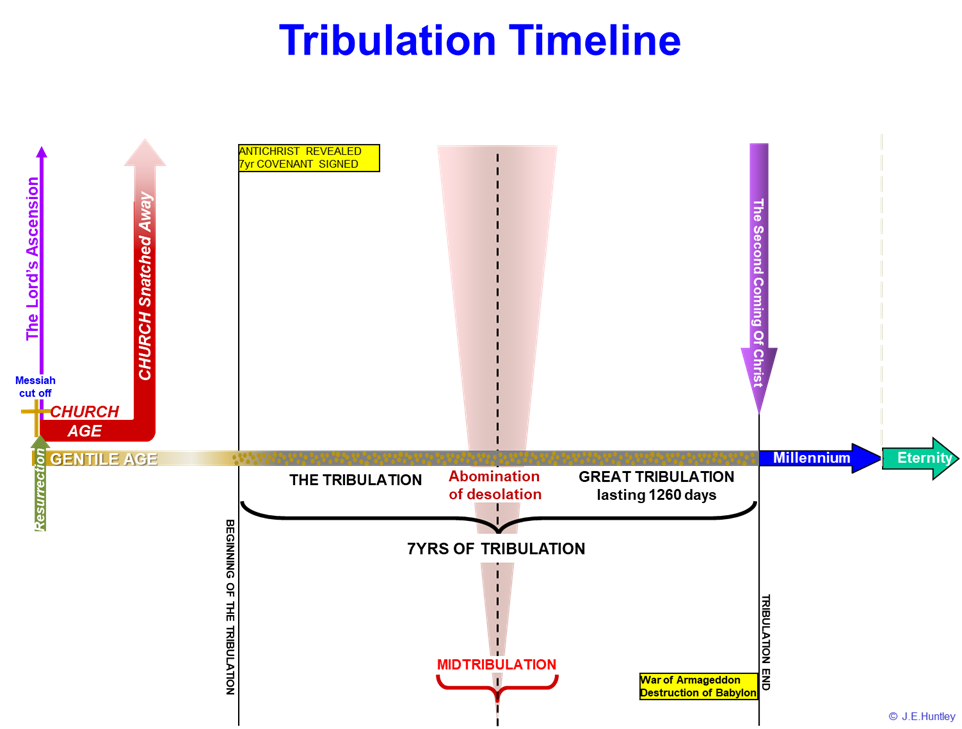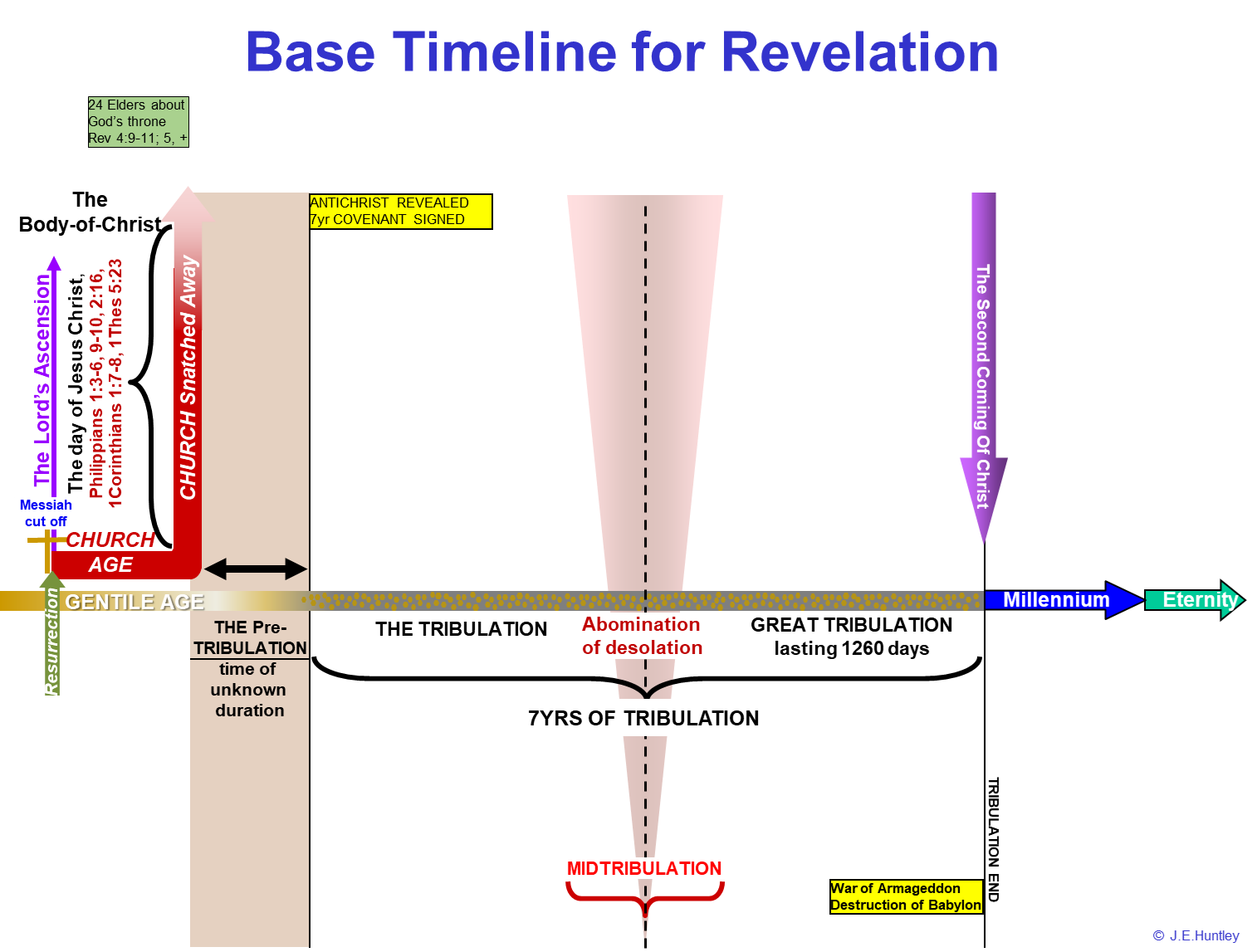Revelation: Chapter 1 Timeline
Setting
This website offers a thoughtful look at how graphical timelines, particularly those based on the book of Daniel and Revelation, can serve as a navigational tool for understanding biblical prophecy. The idea is to simplify complex, interwoven events into a visual format that emphasizes the “relative” order of events over exact chronological precision. That is, while the horizontal bars don’t necessarily represent equal spans of time, they help the reader grasp which events occur before, during, or after others in the prophetic narrative. For instance, as the following base timeline shows, the progression moves from the beginning of the Gentile age, early in King Nebuchadnezzar’s reign, Daniel 2:36-43, past three other succeeding kingdoms through millennia, to a future a Gentile kingdom that will rule the world, marked by iron (strength) mixed with clay (weakness). The chart is simple, with changing colors to reflect the last Gentile kingdom in the last days, and its abrupt end. That last Gentile kingdom will be replaced by the Lord Jesus Christ’s return to begin His eternal rule over this world, Daniel 2:44-45. It all begins with the following simple bar graphic.
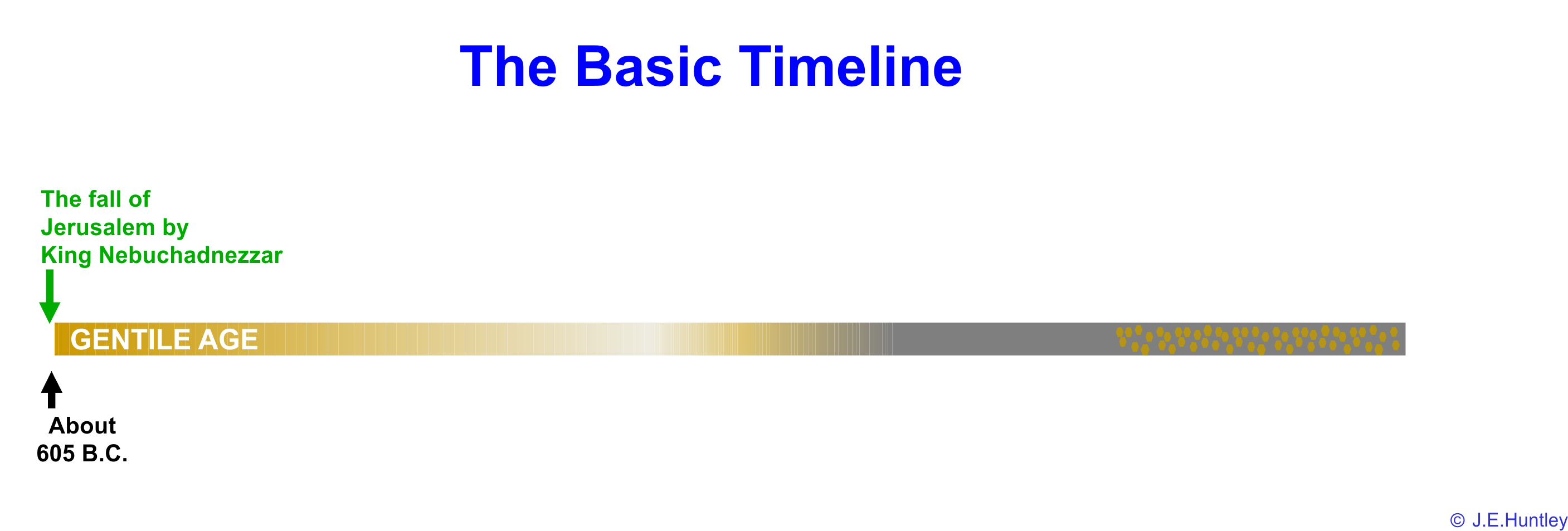
The timeline begins against the historical backdrop of Daniel’s life, from his early days as a captive in Babylon, when he received key prophetic revelations in Daniel 2, and onward to the far future in Daniel 7–12, revealed to Daniel in his later years. This progression not only frames critical moments from historical empires (like that of Nebuchadnezzar’s Babylon, to Medeo-Persia, to Alexander the Great, and on to the Roman empire) but also sets up the symbolic schema that many interpreters believe is reflected in later biblical literature (for example, in Revelation). What makes Daniel’s timeline particularly compelling is its dual role: it records actual historical events while simultaneously serving as a blueprint for future prophetic fulfillment, as shown in the following timeline.
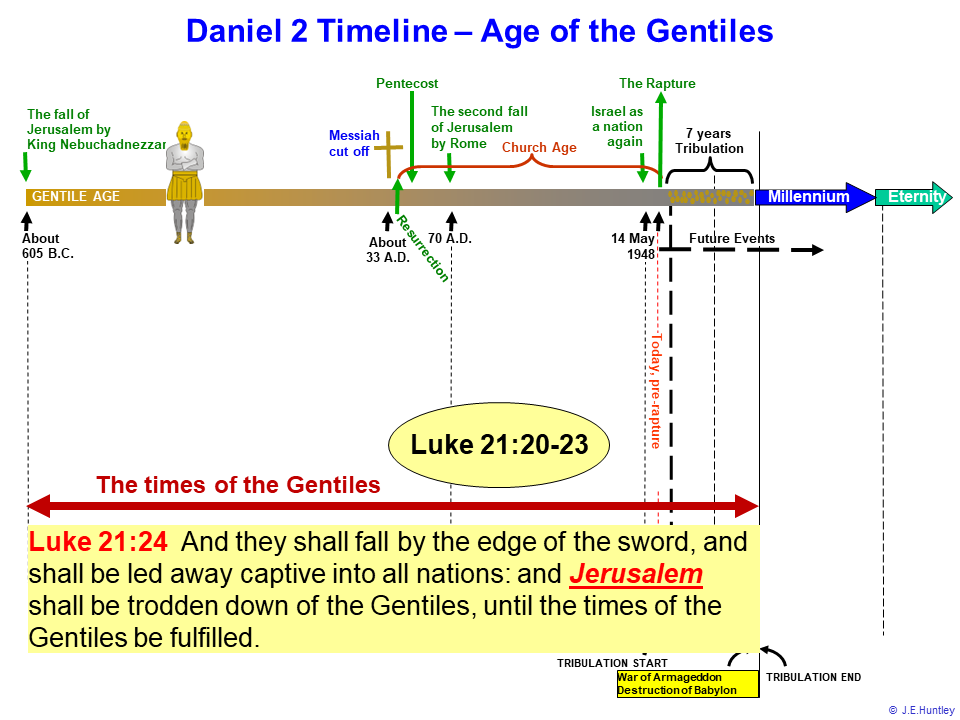
A notable aspect of such timelines is their “building” nature. One starts with a base chart capturing a single concept and then layers on additional details to create an aggregated overview, whether that be a chapter-by-chapter breakdown or a broader summary of an entire biblical book.
Next, as the timeline below begins by showing the snatching away of the New Testament church, and then appearing before the throne of God, represented by the 24 elders, shown in the green box. Then the progression of prophetic events moves from the Church Age marked by red indicators (like the snatching away (rapture)) to a pre-tribulation time period and the subsequent tribulation, to future events such as the Lord Jesus Christ’s second advent, His millennial reign, and finally, the eternal state as depicted in Revelation. This layered approach invites readers not just to see isolated events but to appreciate how they interconnect in the unfolding of what some interpret as God’s plan for the ages.
Another use of the timeline is to view how chapters within a book of the Bible lay out across it. Below, the base timeline is used as a backdrop to indicate where the chapters of Revelation fit along the timeline. It becomes apparent that not all the chapters in Revelation are arranged in sequential order, specifically Revelation 17.
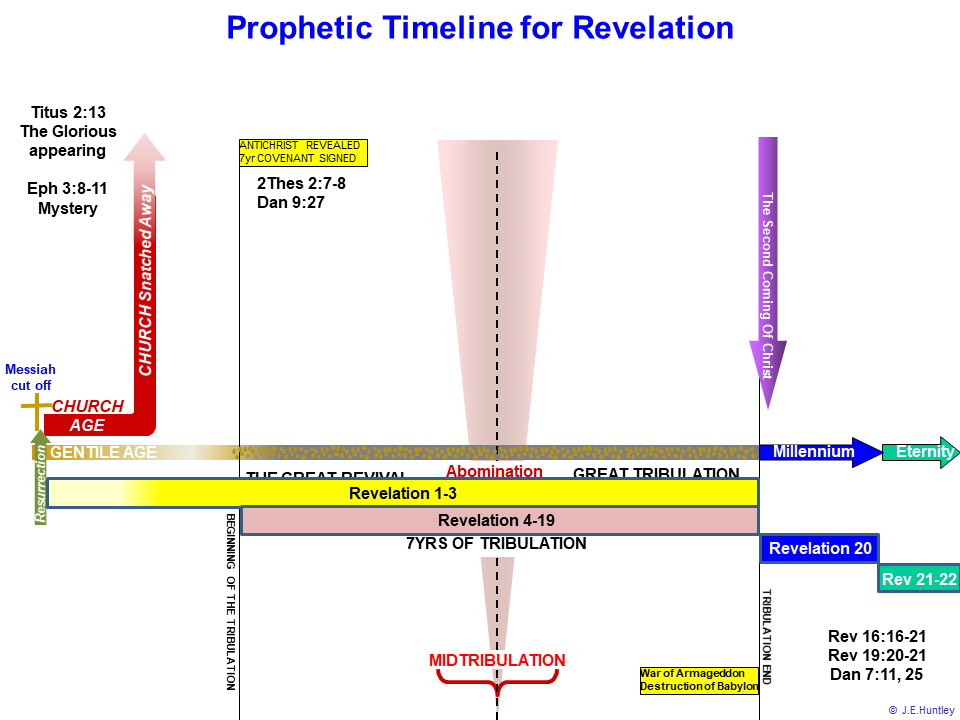
It’s important to note the caution built into the presentation: readers are encouraged to compare these visual representations with the scriptures themselves. Since these charts are generalized, and sometimes the spacing between events is more about conveying sequence than precise time intervals, they serve as a guide rather than an absolute timeline. This balance between clarity and detail is crucial; it acknowledges the limits of human-made diagrams in capturing divine timing and urges a personal exploration of the biblical texts.
The next graphic represents Revelation 1 with the picture on the bottom left of the graph. It reflects the commission given to John by the Lord, Revelation 1:11, 19, and the three episodes he was to capture in the book, the things that were, the things that are and the things hereafter.
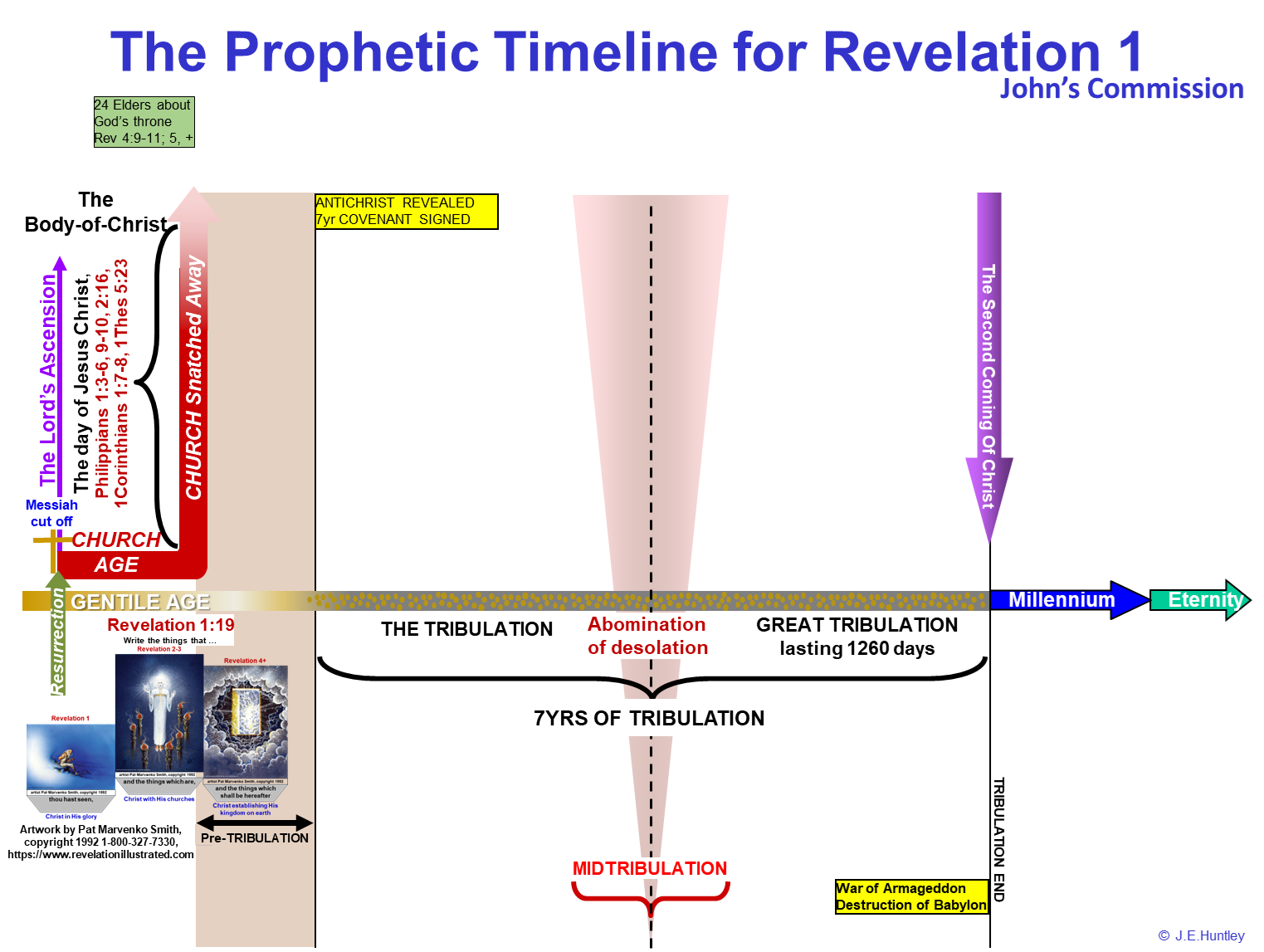
The following graphic is an extension of the timelines above to provide a focused view of the events within the New Testament era, from the cross through to eternity future. The timeline is stretched to highlight the distinction of the New Testament churches from the seven churches Christ Jesus wrote to in Revelation 2 and 3 as He prepared them for the coming tribulation they will go through. It is also a generalization of what the Lord said to John, instructing him to write the things that he has seen, the things that are, and the things that shall be, Revelation 1:19. As can be seen below, the Jewish churches in the church age, and the tribulation churches fall within the category of "the things that are, which is generalized across the two groups. Though the New Testament churches will not go through the tribulation to witness God’s wrath upon the earth, the seven letters have much for the churches to learn from today." After the discussion of the churches, the focus shifts to the throne room of God, using the term, "hereafter" as translated in the King James Version (KJV). Again, the difference between this chart and the previous one is the expansion of the timeline for the period covering the Church Age. This is done for purely chartmanship purposes to enable the description of the churches.
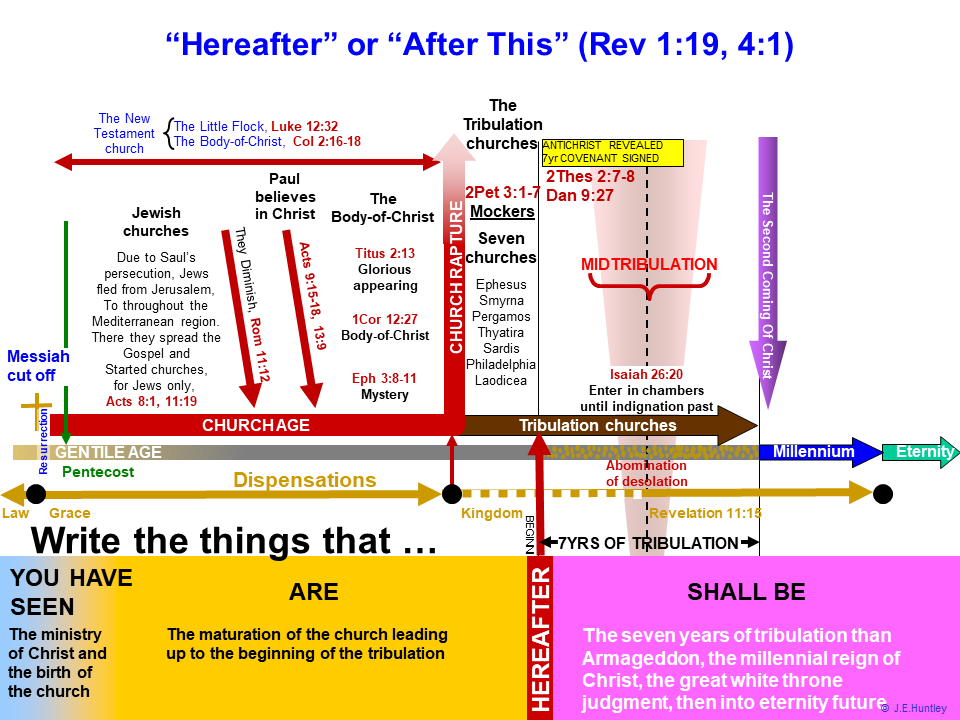
Timelines like these have garnered attention among those studying biblical prophecy. They simplify the overwhelming amount of detail into form that can be more easily digested, much like other tools used in historical and prophetic studies. By doing so, they can spark deeper reflection on how past, present, and future events might interweave according to scriptural prophecy, a discussion that often leads to further thoughtful questions on how we interpret signs and symbols in ancient texts.

